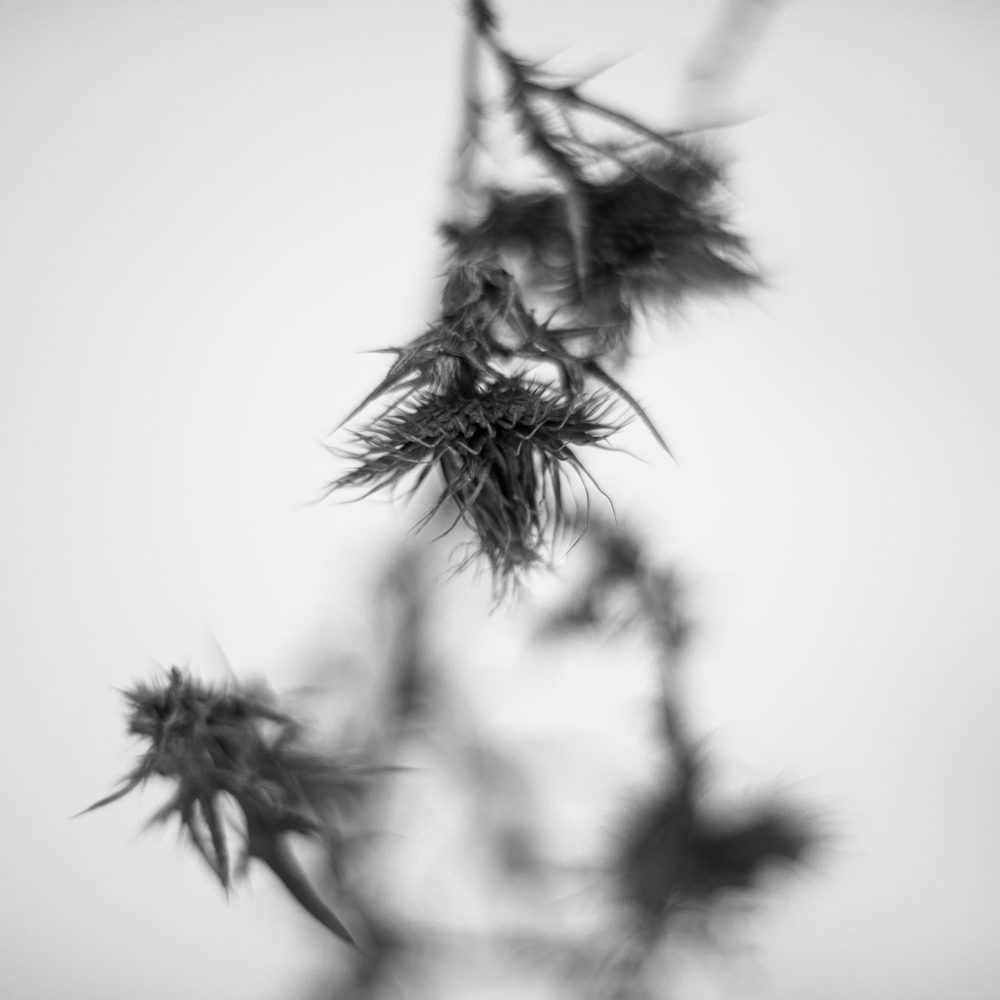 The thistle has launched, if not a civil war, at least a skirmish in my mind. The fields around the farm are full of dried thistle plants, and as the snow melts, more are emerging. I find them photographically irresistible, and my naturalist side is delighted to have them. Their big flowers and ample nectar draw hummingbirds, butterflies, all manner of bees, and other winged pollinators; and their seeds are favorites of finches and other birds — a wonderful addition to a healthy and enticing grassland environment.
The thistle has launched, if not a civil war, at least a skirmish in my mind. The fields around the farm are full of dried thistle plants, and as the snow melts, more are emerging. I find them photographically irresistible, and my naturalist side is delighted to have them. Their big flowers and ample nectar draw hummingbirds, butterflies, all manner of bees, and other winged pollinators; and their seeds are favorites of finches and other birds — a wonderful addition to a healthy and enticing grassland environment.
But I am already starting to think like a farmer as well, inheriting the confirmed enmity between shepherd and thistle. Sheep don’t like to graze near the spiny leaves and flowers, so lots of thistle in a pasture means less food available for the livestock. And the dried flower parts love to lodge in sheepswool, rendering it much less desirable to hand-spinners, the most lucrative market for a small-scale wool producer. Beyond these concrete drawbacks, farmers seem to harbor a less-rational animus, a fear that one ignored thistle plant will soon multiply and crowd out an entire field of grass and clover, leaving the sheep or cattle to starve.
I’m trying to remain unaligned in the thistle wars long enough to watch the plant for a couple of years (thistle is a biennial) and see if either reputation is deserved. It’s also a reminder of a bigger issue: I’ve moved to a gorgeous rural area, with nature voluptuously present all around, so it’s easy to forget that farming can be a profoundly un-natural activity. Learning to reconcile the two feels like one of my most important projects as the current steward of this beautiful place.
Tagged: bull thistle, Hollow Oak Farm, noxious weed, pasture, pollinator, Thistle